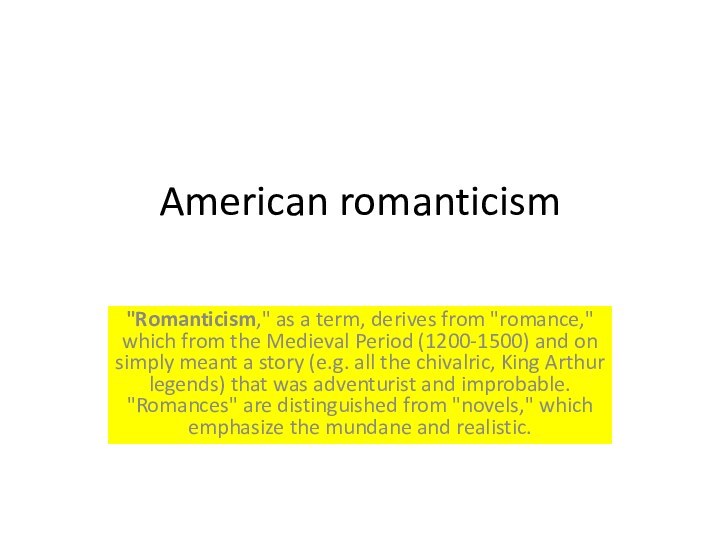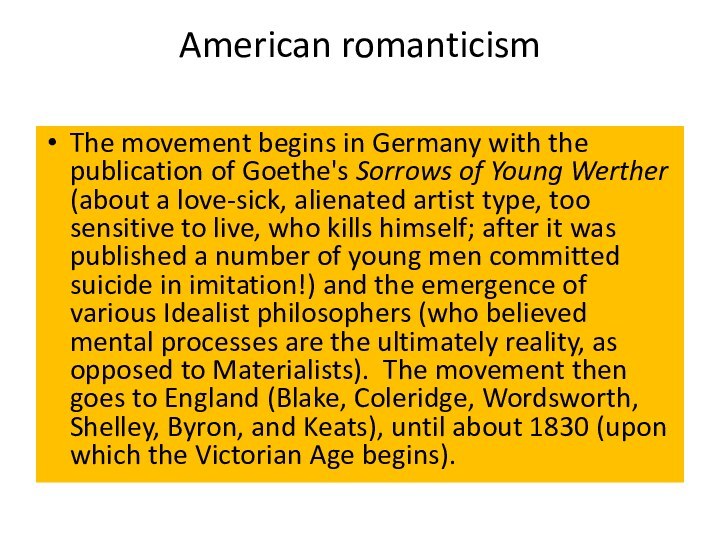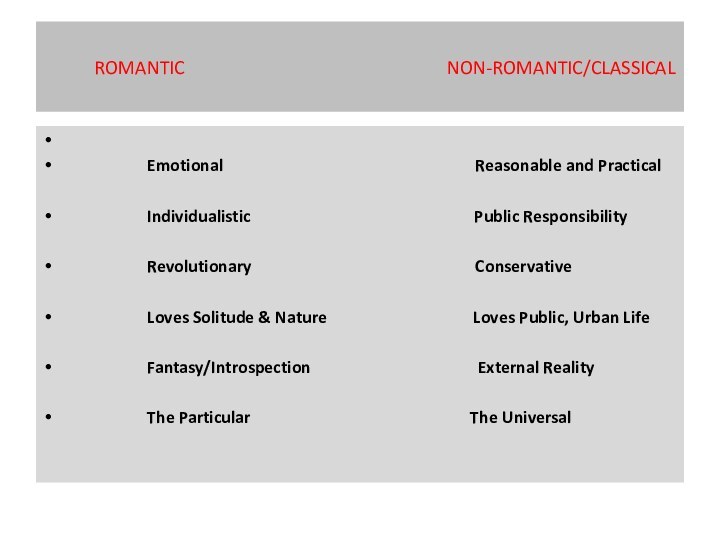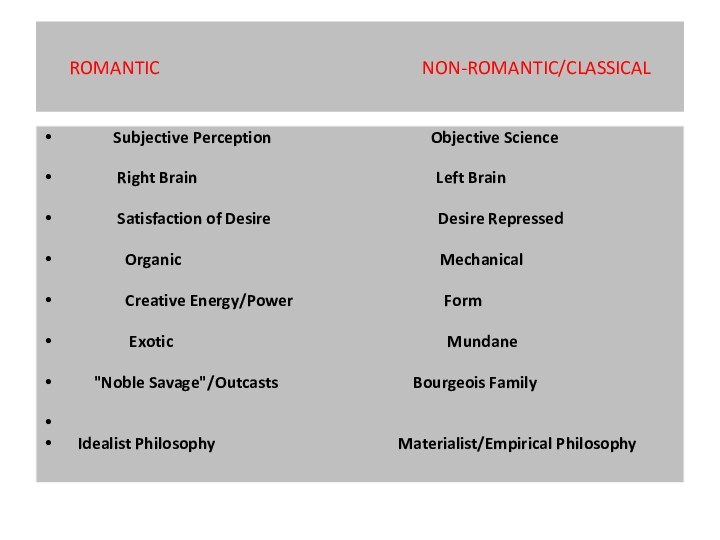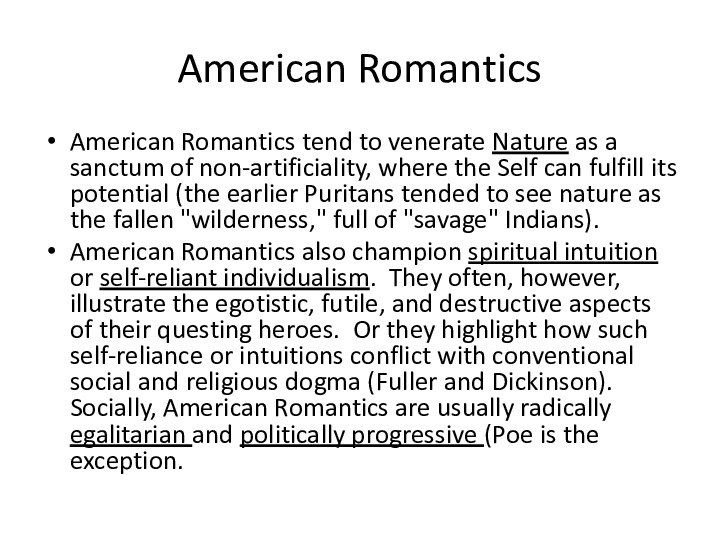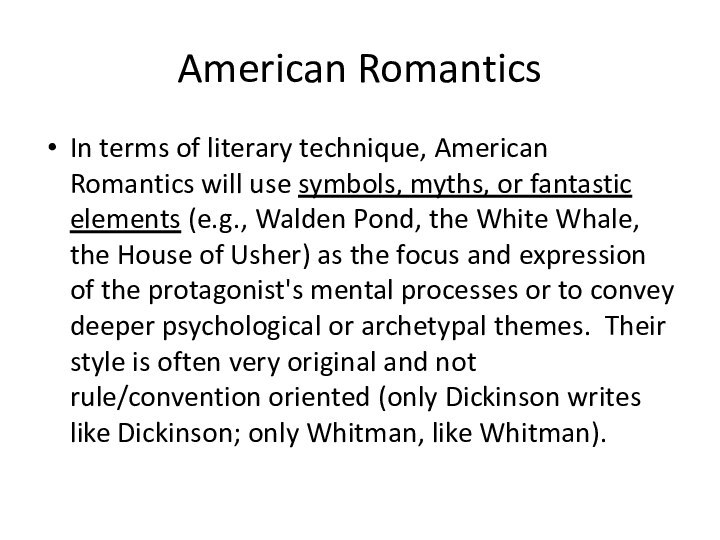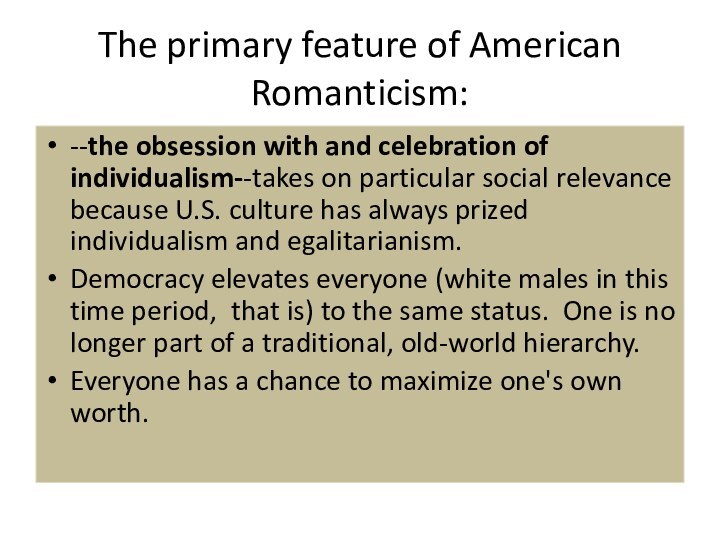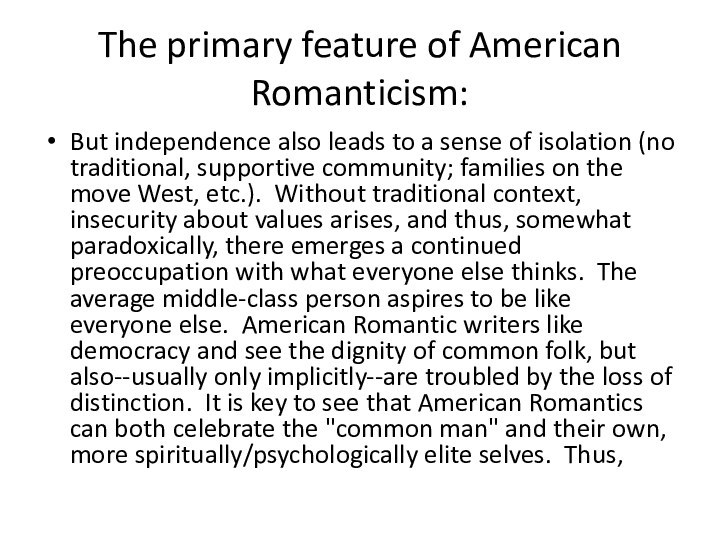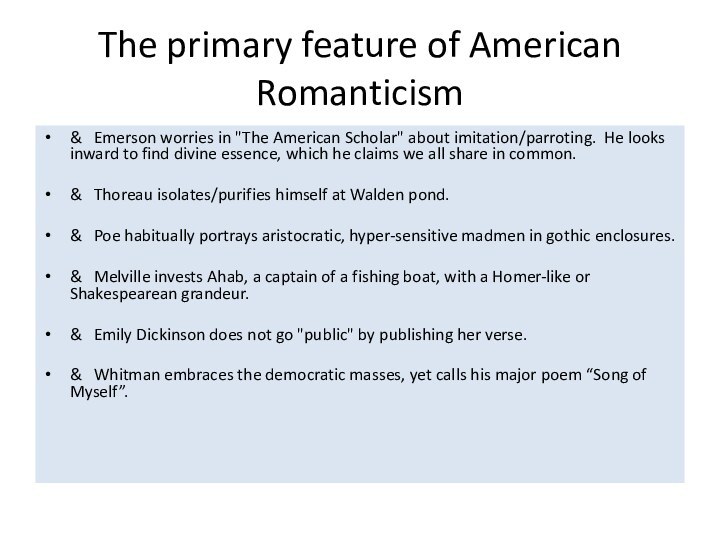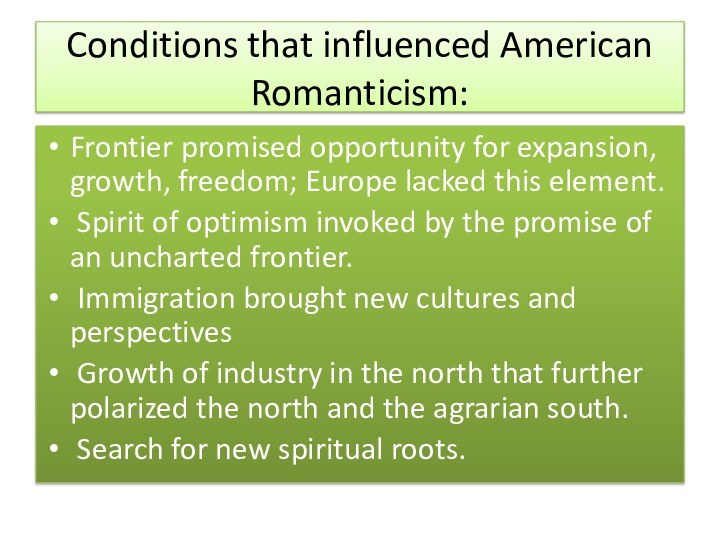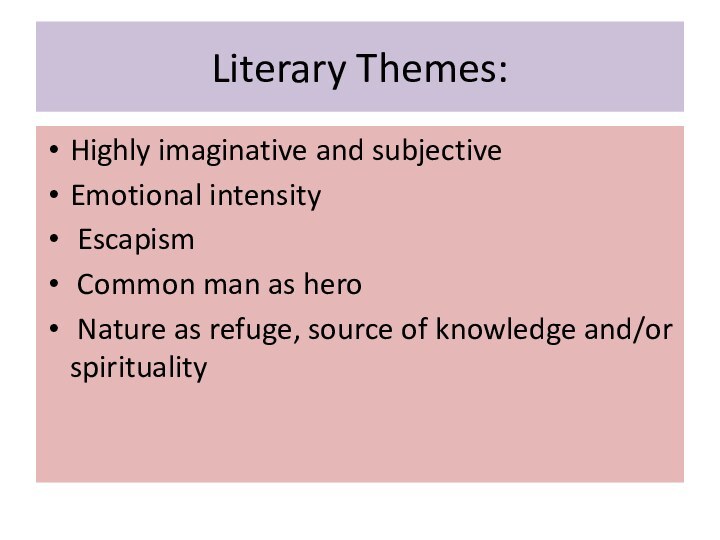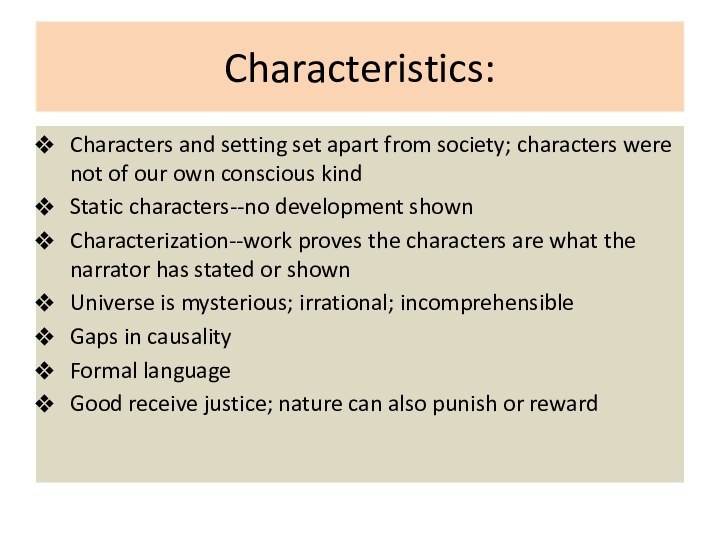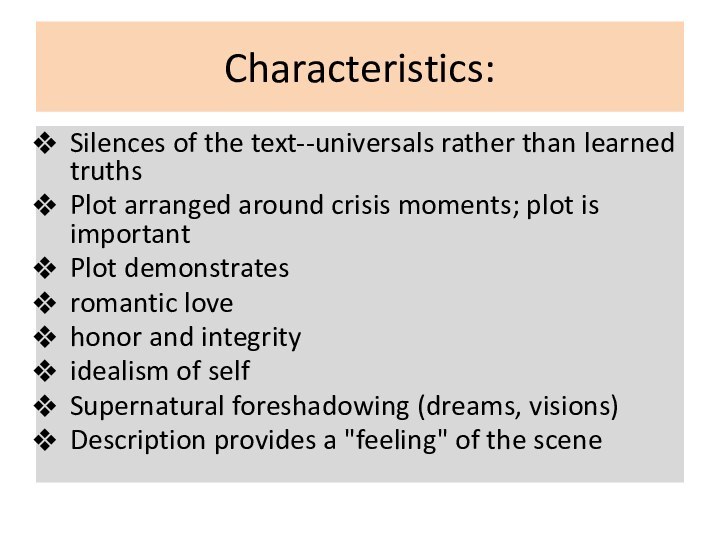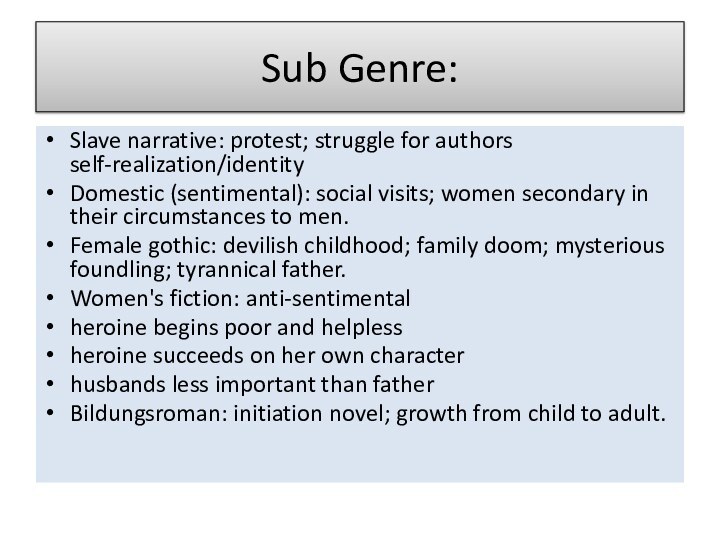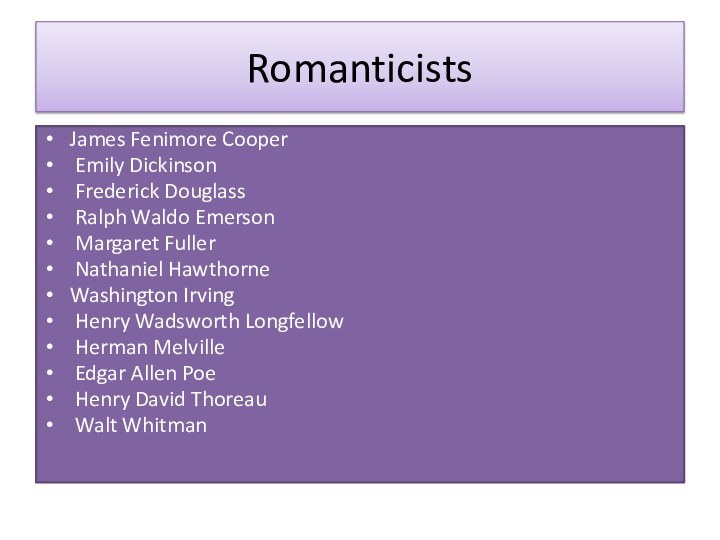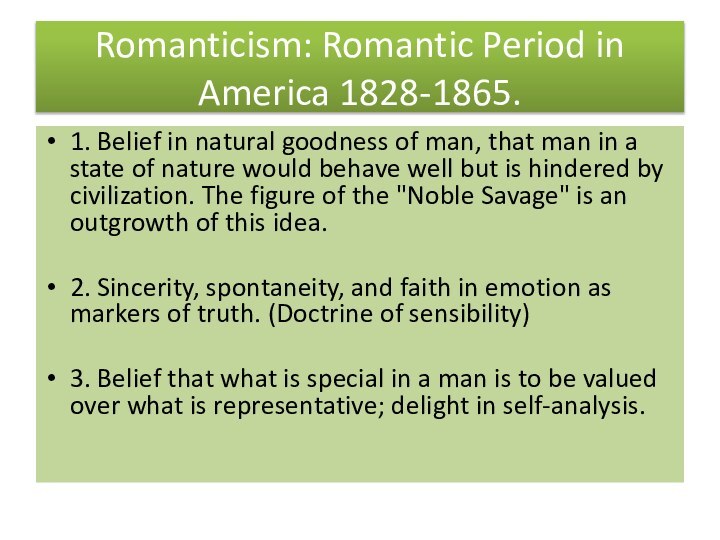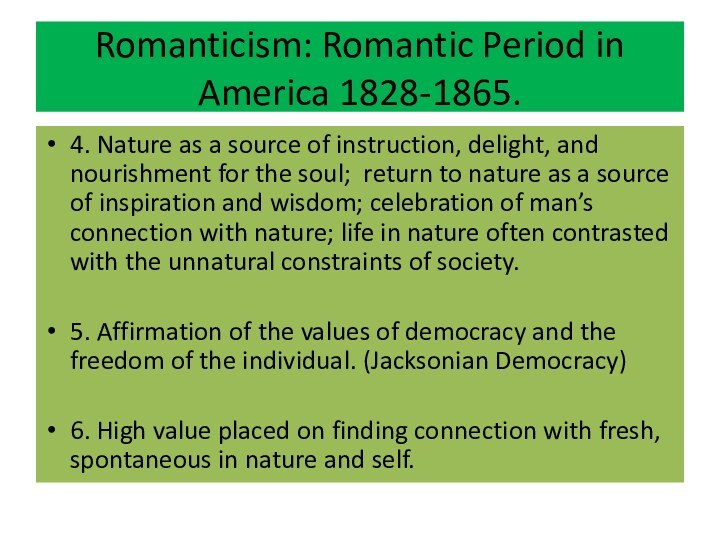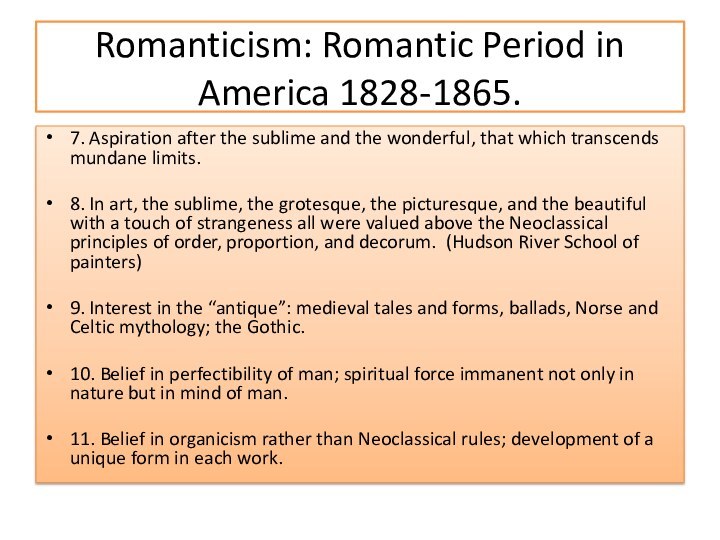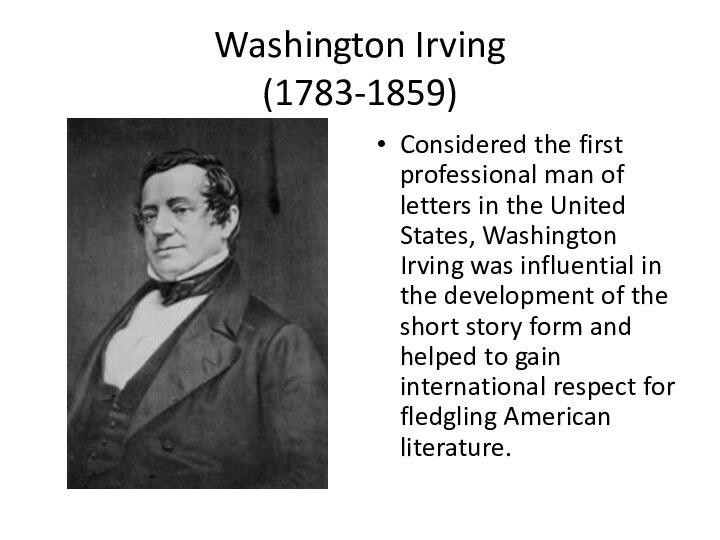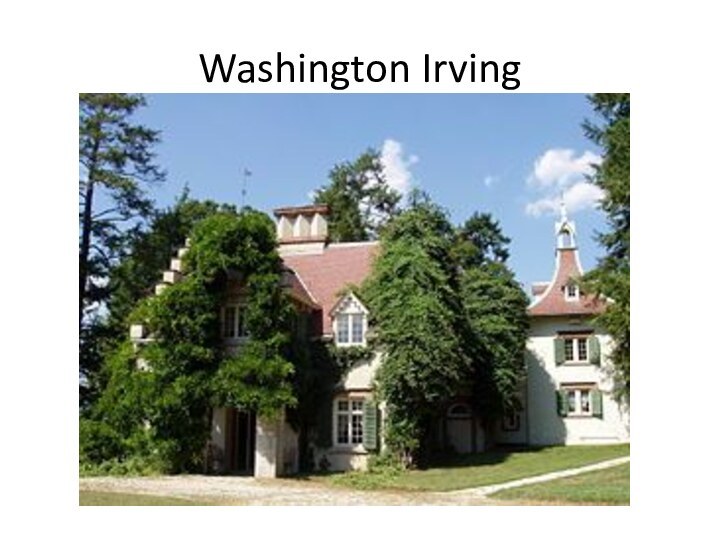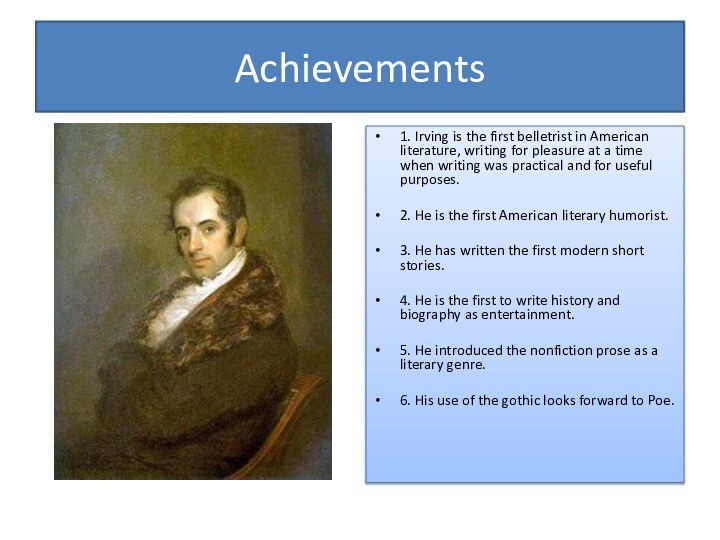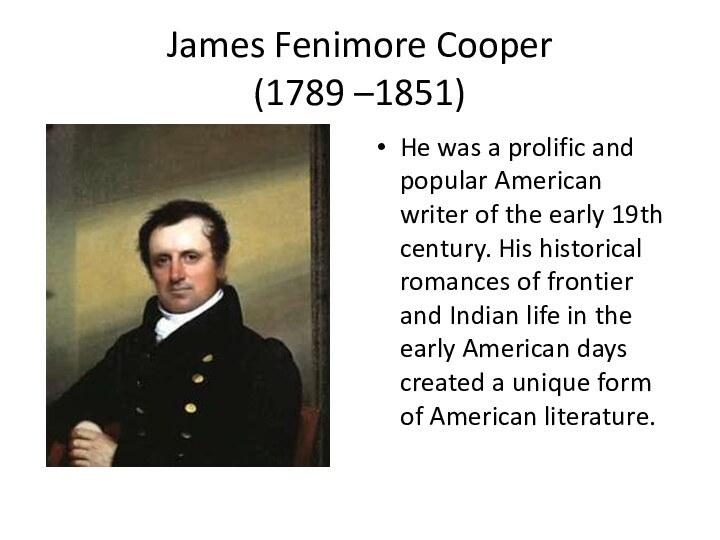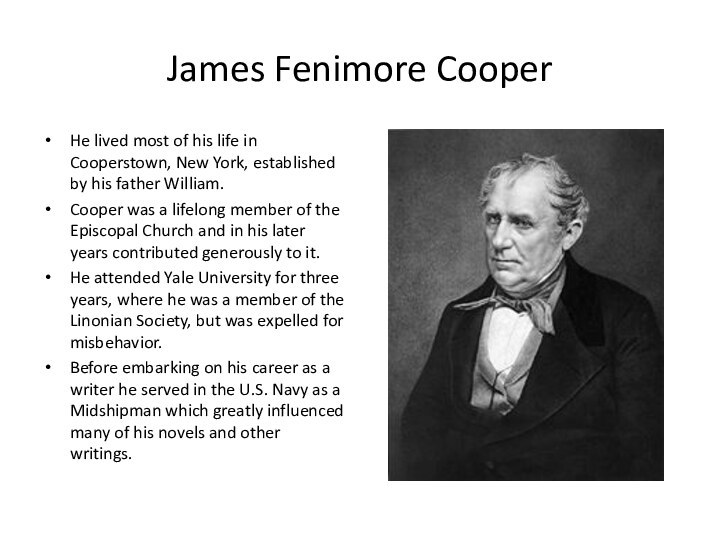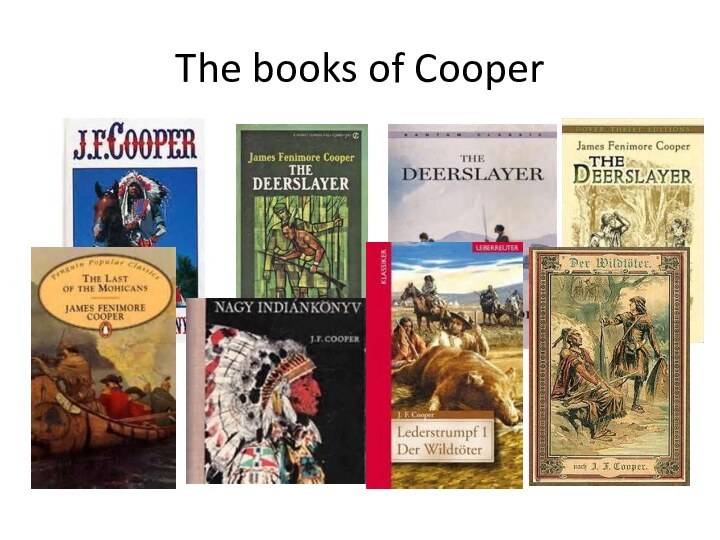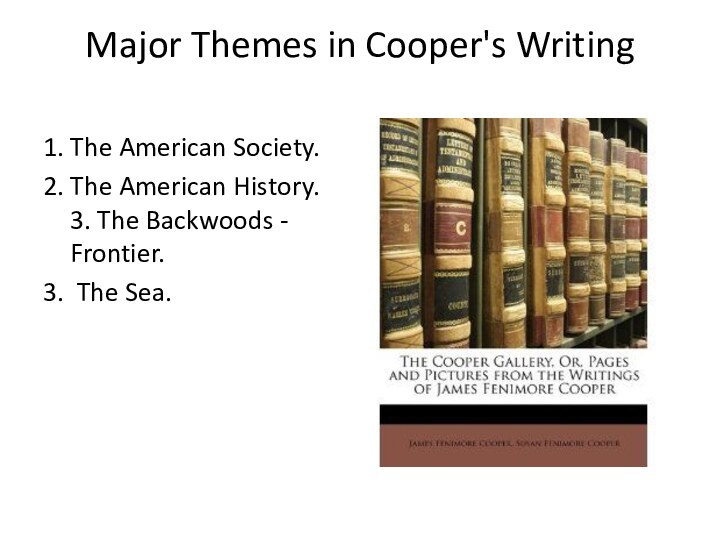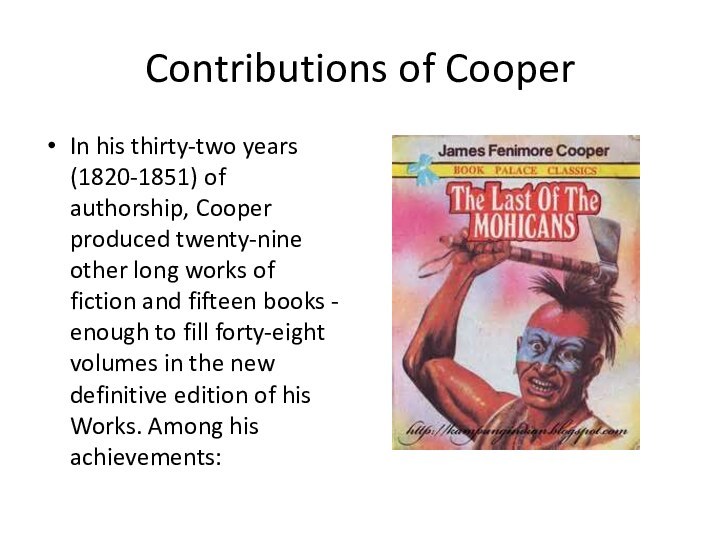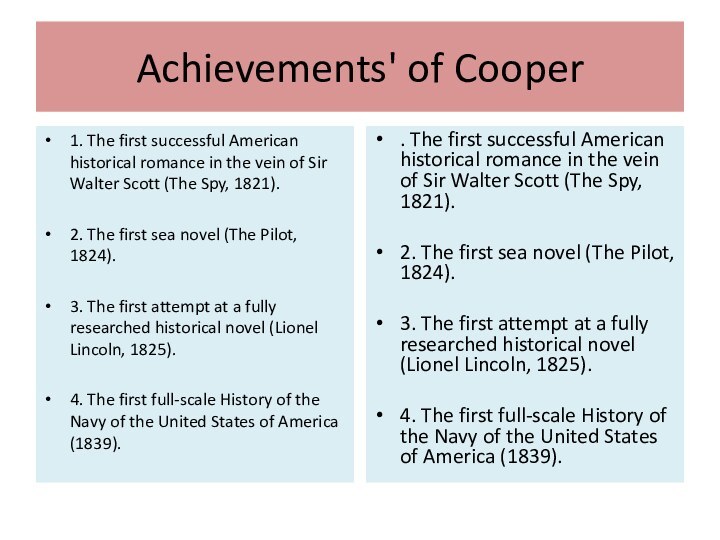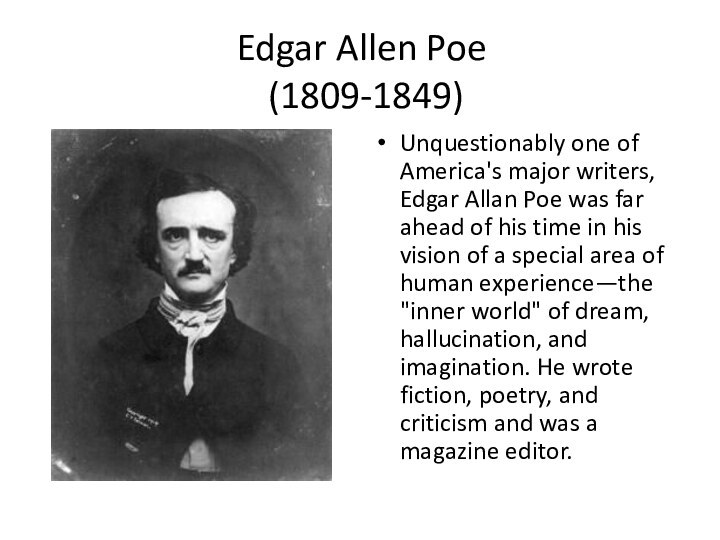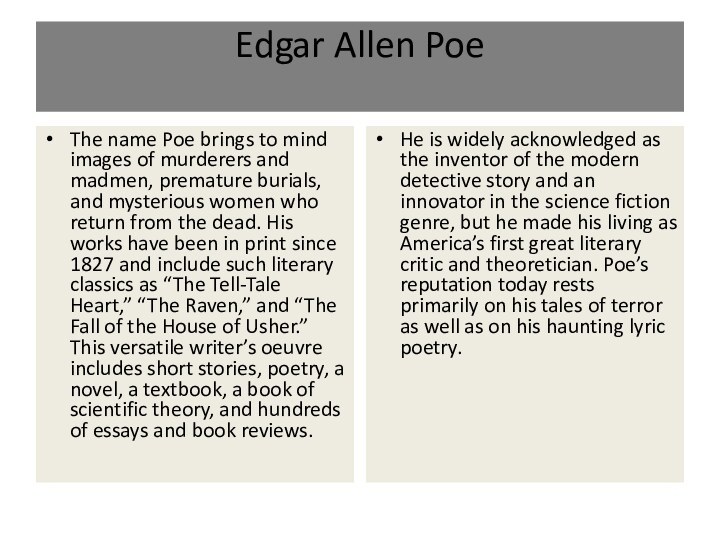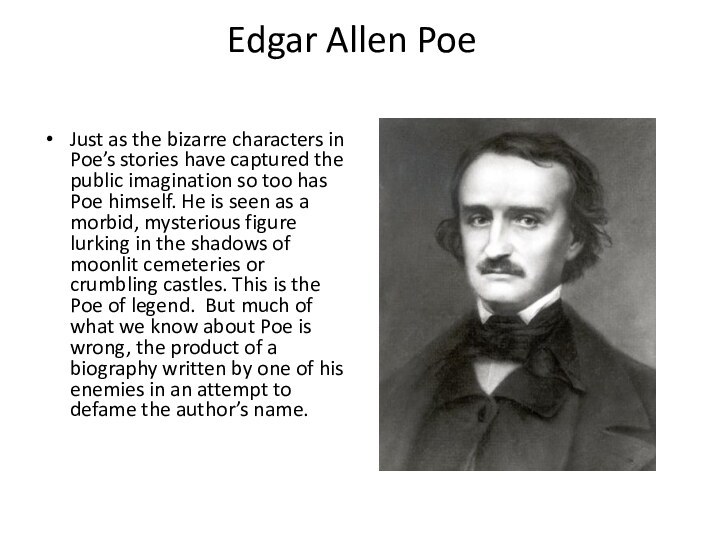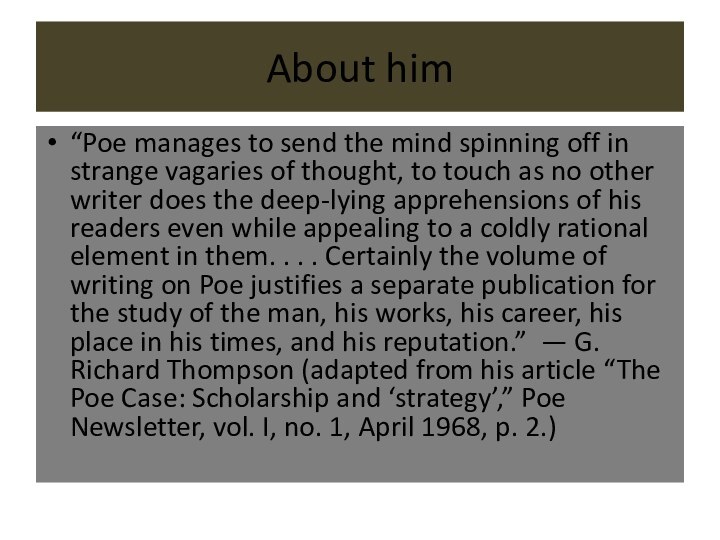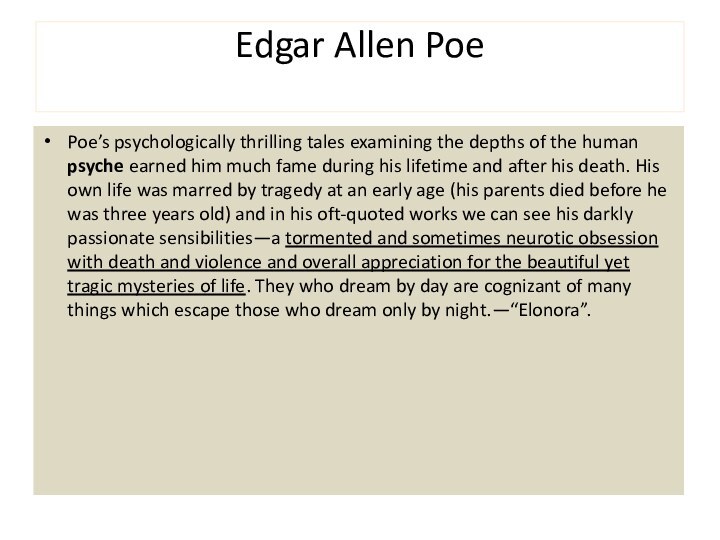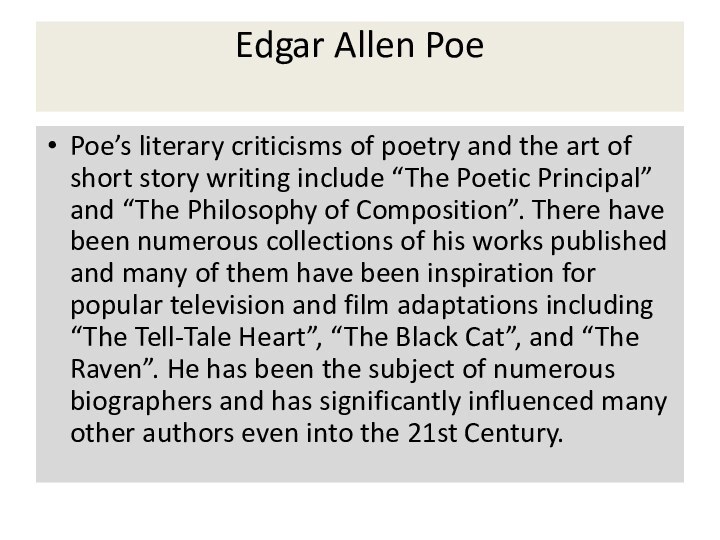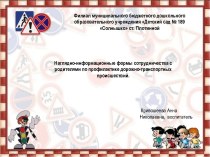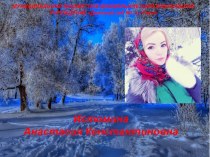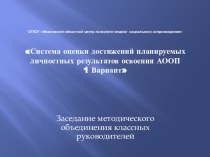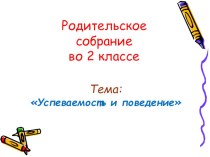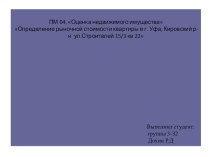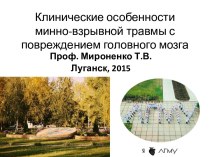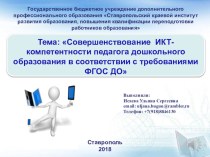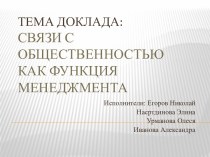Слайд 2
The "Romantic Period" refers to literary and cultural
movements in England, Europe, and America roughly from 1770
to 1860.
Romantic writers saw themselves as revolting against the "Age of Reason" (1700-1770) and its values.
They celebrated imagination/intuition versus reason/calculation, spontaneity versus control, subjectivity and metaphysical musing versus objective fact, revolutionary energy versus tradition, individualism versus social conformity, democracy versus monarchy, and so on.
Слайд 3
American romanticism
The movement begins in Germany with the
publication of Goethe's Sorrows of Young Werther (about a
love-sick, alienated artist type, too sensitive to live, who kills himself; after it was published a number of young men committed suicide in imitation!) and the emergence of various Idealist philosophers (who believed mental processes are the ultimately reality, as opposed to Materialists). The movement then goes to England (Blake, Coleridge, Wordsworth, Shelley, Byron, and Keats), until about 1830 (upon which the Victorian Age begins).
NON-ROMANTIC/CLASSICAL
Emotional Reasonable and Practical
Individualistic Public Responsibility
Revolutionary Conservative
Loves Solitude & Nature Loves Public, Urban Life
Fantasy/Introspection External Reality
The Particular The Universal
NON-ROMANTIC/CLASSICAL
Subjective Perception Objective Science
Right Brain Left Brain
Satisfaction of Desire Desire Repressed
Organic Mechanical
Creative Energy/Power Form
Exotic Mundane
"Noble Savage"/Outcasts Bourgeois Family
Idealist Philosophy Materialist/Empirical Philosophy
Слайд 6
American Romantics
American Romantics tend to venerate Nature as
a sanctum of non-artificiality, where the Self can fulfill
its potential (the earlier Puritans tended to see nature as the fallen "wilderness," full of "savage" Indians).
American Romantics also champion spiritual intuition or self-reliant individualism. They often, however, illustrate the egotistic, futile, and destructive aspects of their questing heroes. Or they highlight how such self-reliance or intuitions conflict with conventional social and religious dogma (Fuller and Dickinson). Socially, American Romantics are usually radically egalitarian and politically progressive (Poe is the exception.
Слайд 7
American Romantics
In terms of literary technique, American Romantics
will use symbols, myths, or fantastic elements (e.g., Walden
Pond, the White Whale, the House of Usher) as the focus and expression of the protagonist's mental processes or to convey deeper psychological or archetypal themes. Their style is often very original and not rule/convention oriented (only Dickinson writes like Dickinson; only Whitman, like Whitman).
Слайд 8
The primary feature of American Romanticism:
--the obsession with
and celebration of individualism--takes on particular social relevance because
U.S. culture has always prized individualism and egalitarianism.
Democracy elevates everyone (white males in this time period, that is) to the same status. One is no longer part of a traditional, old-world hierarchy.
Everyone has a chance to maximize one's own worth.
Слайд 9
The primary feature of American Romanticism:
But independence also
leads to a sense of isolation (no traditional, supportive
community; families on the move West, etc.). Without traditional context, insecurity about values arises, and thus, somewhat paradoxically, there emerges a continued preoccupation with what everyone else thinks. The average middle-class person aspires to be like everyone else. American Romantic writers like democracy and see the dignity of common folk, but also--usually only implicitly--are troubled by the loss of distinction. It is key to see that American Romantics can both celebrate the "common man" and their own, more spiritually/psychologically elite selves. Thus,
Слайд 10
The primary feature of American Romanticism
& Emerson
worries in "The American Scholar" about imitation/parroting. He looks
inward to find divine essence, which he claims we all share in common.
& Thoreau isolates/purifies himself at Walden pond.
& Poe habitually portrays aristocratic, hyper-sensitive madmen in gothic enclosures.
& Melville invests Ahab, a captain of a fishing boat, with a Homer-like or Shakespearean grandeur.
& Emily Dickinson does not go "public" by publishing her verse.
& Whitman embraces the democratic masses, yet calls his major poem “Song of Myself”.
Слайд 11
Conditions that influenced American Romanticism:
Frontier promised opportunity for
expansion, growth, freedom; Europe lacked this element.
Spirit of
optimism invoked by the promise of an uncharted frontier.
Immigration brought new cultures and perspectives
Growth of industry in the north that further polarized the north and the agrarian south.
Search for new spiritual roots.
Слайд 12
Literary Themes:
Highly imaginative and subjective
Emotional intensity
Escapism
Common
man as hero
Nature as refuge, source of knowledge
and/or spirituality
Слайд 13
Characteristics:
Characters and setting set apart from society; characters
were not of our own conscious kind
Static characters--no
development shown
Characterization--work proves the characters are what the narrator has stated or shown
Universe is mysterious; irrational; incomprehensible
Gaps in causality
Formal language
Good receive justice; nature can also punish or reward
Слайд 14
Characteristics:
Silences of the text--universals rather than learned truths
Plot arranged around crisis moments; plot is important
Plot
demonstrates
romantic love
honor and integrity
idealism of self
Supernatural foreshadowing (dreams, visions)
Description provides a "feeling" of the scene
Слайд 15
Sub Genre:
Slave narrative: protest; struggle for authors self-realization/identity
Domestic (sentimental): social visits; women secondary in their circumstances
to men.
Female gothic: devilish childhood; family doom; mysterious foundling; tyrannical father.
Women's fiction: anti-sentimental
heroine begins poor and helpless
heroine succeeds on her own character
husbands less important than father
Bildungsroman: initiation novel; growth from child to adult.
Слайд 16
Romanticists
James Fenimore Cooper
Emily Dickinson
Frederick
Douglass
Ralph Waldo Emerson
Margaret Fuller
Nathaniel
Hawthorne
Washington Irving
Henry Wadsworth Longfellow
Herman Melville
Edgar Allen Poe
Henry David Thoreau
Walt Whitman
Слайд 17
Romanticism: Romantic Period in America 1828-1865.
1. Belief in
natural goodness of man, that man in a state
of nature would behave well but is hindered by civilization. The figure of the "Noble Savage" is an outgrowth of this idea.
2. Sincerity, spontaneity, and faith in emotion as markers of truth. (Doctrine of sensibility)
3. Belief that what is special in a man is to be valued over what is representative; delight in self-analysis.
Слайд 18
Romanticism: Romantic Period in America 1828-1865.
4. Nature as
a source of instruction, delight, and nourishment for the
soul; return to nature as a source of inspiration and wisdom; celebration of man’s connection with nature; life in nature often contrasted with the unnatural constraints of society.
5. Affirmation of the values of democracy and the freedom of the individual. (Jacksonian Democracy)
6. High value placed on finding connection with fresh, spontaneous in nature and self.
Слайд 19
Romanticism: Romantic Period in America 1828-1865.
7. Aspiration after
the sublime and the wonderful, that which transcends mundane
limits.
8. In art, the sublime, the grotesque, the picturesque, and the beautiful with a touch of strangeness all were valued above the Neoclassical principles of order, proportion, and decorum. (Hudson River School of painters)
9. Interest in the “antique”: medieval tales and forms, ballads, Norse and Celtic mythology; the Gothic.
10. Belief in perfectibility of man; spiritual force immanent not only in nature but in mind of man.
11. Belief in organicism rather than Neoclassical rules; development of a unique form in each work.
Слайд 20
Washington Irving
(1783-1859)
Considered the first professional man of
letters in the United States, Washington Irving was influential
in the development of the short story form and helped to gain international respect for fledgling American literature.
Слайд 21
Washington Irving
Author and editor Washington Irving was born
in New York City on April 3, 1783. Irving
achieved international fame for his fictional works, including the stories Rip Van Winkle and The Legend of Sleepy Hollow, as well as for his biographies and historical writings. Irving served as the United States ambassador to Spain and helped to promote international copyright before his death in 1859.
Слайд 23
Achievements
1. Irving is the first belletrist in American
literature, writing for pleasure at a time when writing
was practical and for useful purposes.
2. He is the first American literary humorist.
3. He has written the first modern short stories.
4. He is the first to write history and biography as entertainment.
5. He introduced the nonfiction prose as a literary genre.
6. His use of the gothic looks forward to Poe.
Слайд 24
James Fenimore Cooper
(1789 –1851)
He was a
prolific and popular American writer of the early 19th
century. His historical romances of frontier and Indian life in the early American days created a unique form of American literature.
Слайд 25
James Fenimore Cooper
He lived most of his
life in Cooperstown, New York, established by his father
William.
Cooper was a lifelong member of the Episcopal Church and in his later years contributed generously to it.
He attended Yale University for three years, where he was a member of the Linonian Society, but was expelled for misbehavior.
Before embarking on his career as a writer he served in the U.S. Navy as a Midshipman which greatly influenced many of his novels and other writings.
Слайд 27
Major Themes in Cooper's Writing
1. The American Society.
2.
The American History. 3. The Backwoods - Frontier.
3. The
Sea.
Слайд 28
Contributions of Cooper
In his thirty-two years (1820-1851) of
authorship, Cooper produced twenty-nine other long works of fiction
and fifteen books - enough to fill forty-eight volumes in the new definitive edition of his Works. Among his achievements:
Слайд 29
Achievements' of Cooper
1. The first successful American historical
romance in the vein of Sir Walter Scott (The
Spy, 1821).
2. The first sea novel (The Pilot, 1824).
3. The first attempt at a fully researched historical novel (Lionel Lincoln, 1825).
4. The first full-scale History of the Navy of the United States of America (1839).
. The first successful American historical romance in the vein of Sir Walter Scott (The Spy, 1821).
2. The first sea novel (The Pilot, 1824).
3. The first attempt at a fully researched historical novel (Lionel Lincoln, 1825).
4. The first full-scale History of the Navy of the United States of America (1839).
Слайд 30
Edgar Allen Poe
(1809-1849)
Unquestionably one of America's
major writers, Edgar Allan Poe was far ahead of
his time in his vision of a special area of human experience—the "inner world" of dream, hallucination, and imagination. He wrote fiction, poetry, and criticism and was a magazine editor.
Слайд 31
Edgar Allen Poe
The name Poe brings to mind
images of murderers and madmen, premature burials, and mysterious
women who return from the dead. His works have been in print since 1827 and include such literary classics as “The Tell-Tale Heart,” “The Raven,” and “The Fall of the House of Usher.” This versatile writer’s oeuvre includes short stories, poetry, a novel, a textbook, a book of scientific theory, and hundreds of essays and book reviews.
He is widely acknowledged as the inventor of the modern detective story and an innovator in the science fiction genre, but he made his living as America’s first great literary critic and theoretician. Poe’s reputation today rests primarily on his tales of terror as well as on his haunting lyric poetry.
Слайд 32
Edgar Allen Poe
Just as the bizarre characters in
Poe’s stories have captured the public imagination so too
has Poe himself. He is seen as a morbid, mysterious figure lurking in the shadows of moonlit cemeteries or crumbling castles. This is the Poe of legend. But much of what we know about Poe is wrong, the product of a biography written by one of his enemies in an attempt to defame the author’s name.
Слайд 33
About him
“Poe manages to send the mind spinning
off in strange vagaries of thought, to touch as
no other writer does the deep-lying apprehensions of his readers even while appealing to a coldly rational element in them. . . . Certainly the volume of writing on Poe justifies a separate publication for the study of the man, his works, his career, his place in his times, and his reputation.” — G. Richard Thompson (adapted from his article “The Poe Case: Scholarship and ‘strategy’,” Poe Newsletter, vol. I, no. 1, April 1968, p. 2.)
Слайд 34
Edgar Allen Poe
Poe’s psychologically thrilling tales examining the
depths of the human psyche earned him much fame
during his lifetime and after his death. His own life was marred by tragedy at an early age (his parents died before he was three years old) and in his oft-quoted works we can see his darkly passionate sensibilities—a tormented and sometimes neurotic obsession with death and violence and overall appreciation for the beautiful yet tragic mysteries of life. They who dream by day are cognizant of many things which escape those who dream only by night.—“Elonora”.
